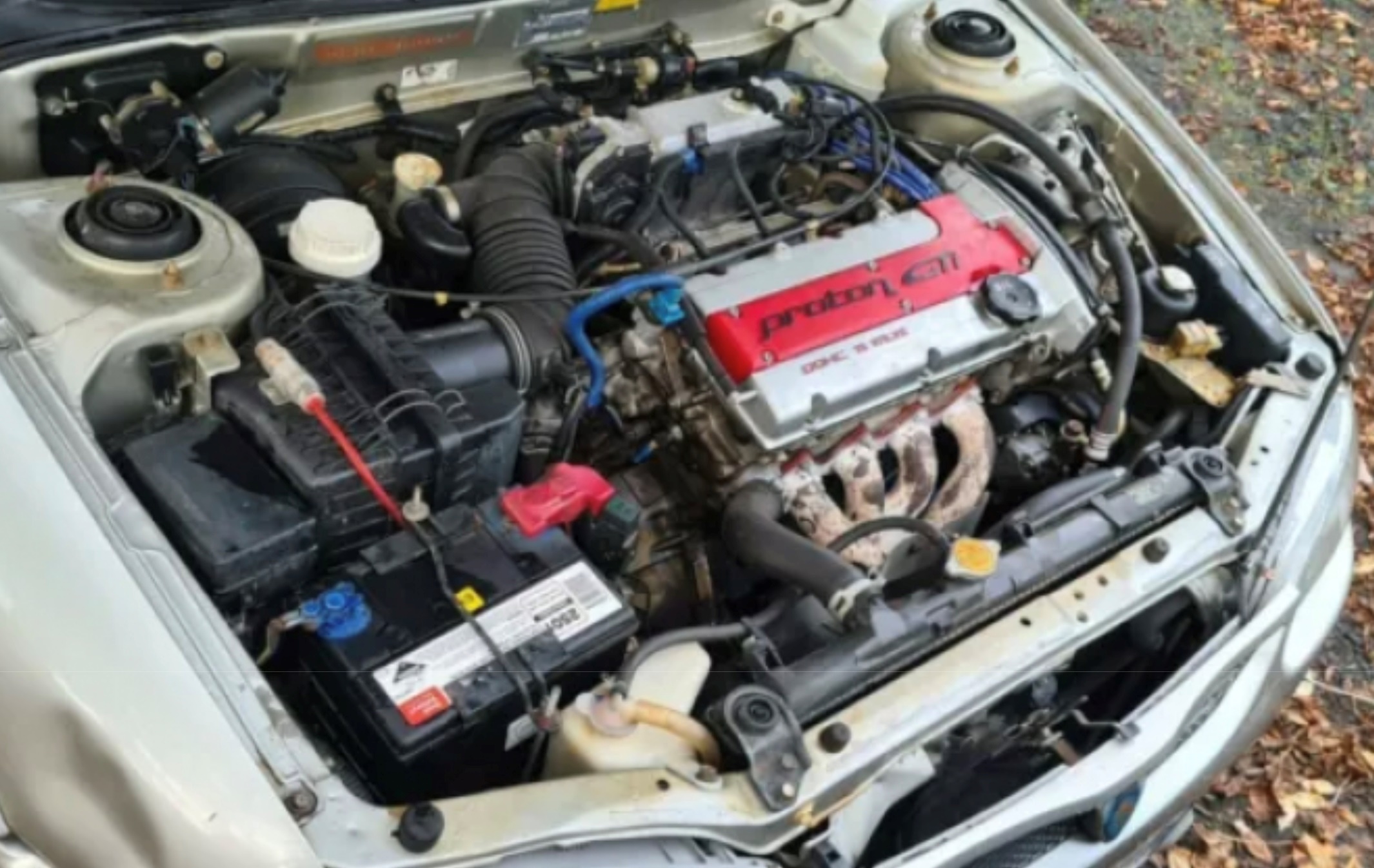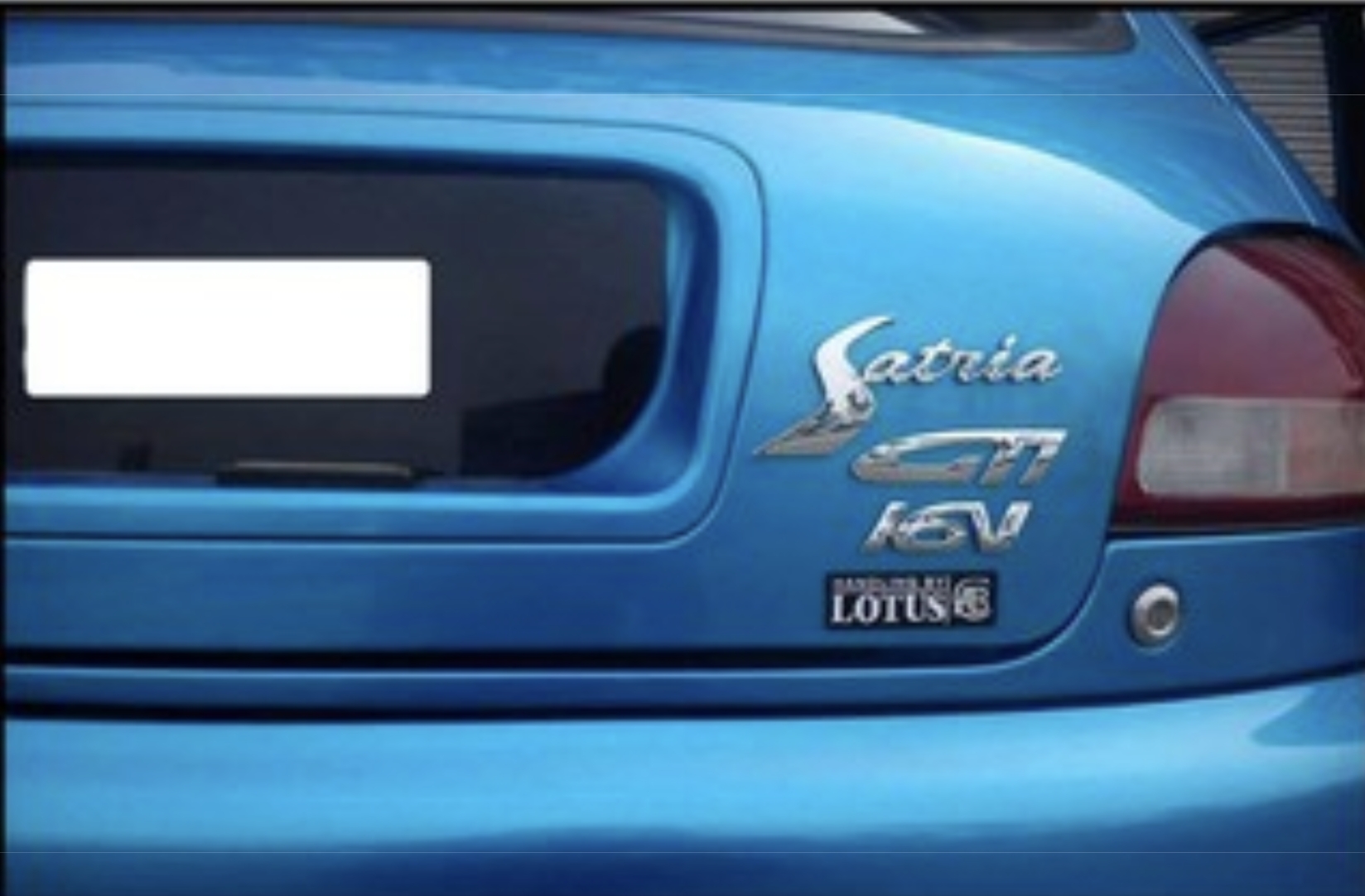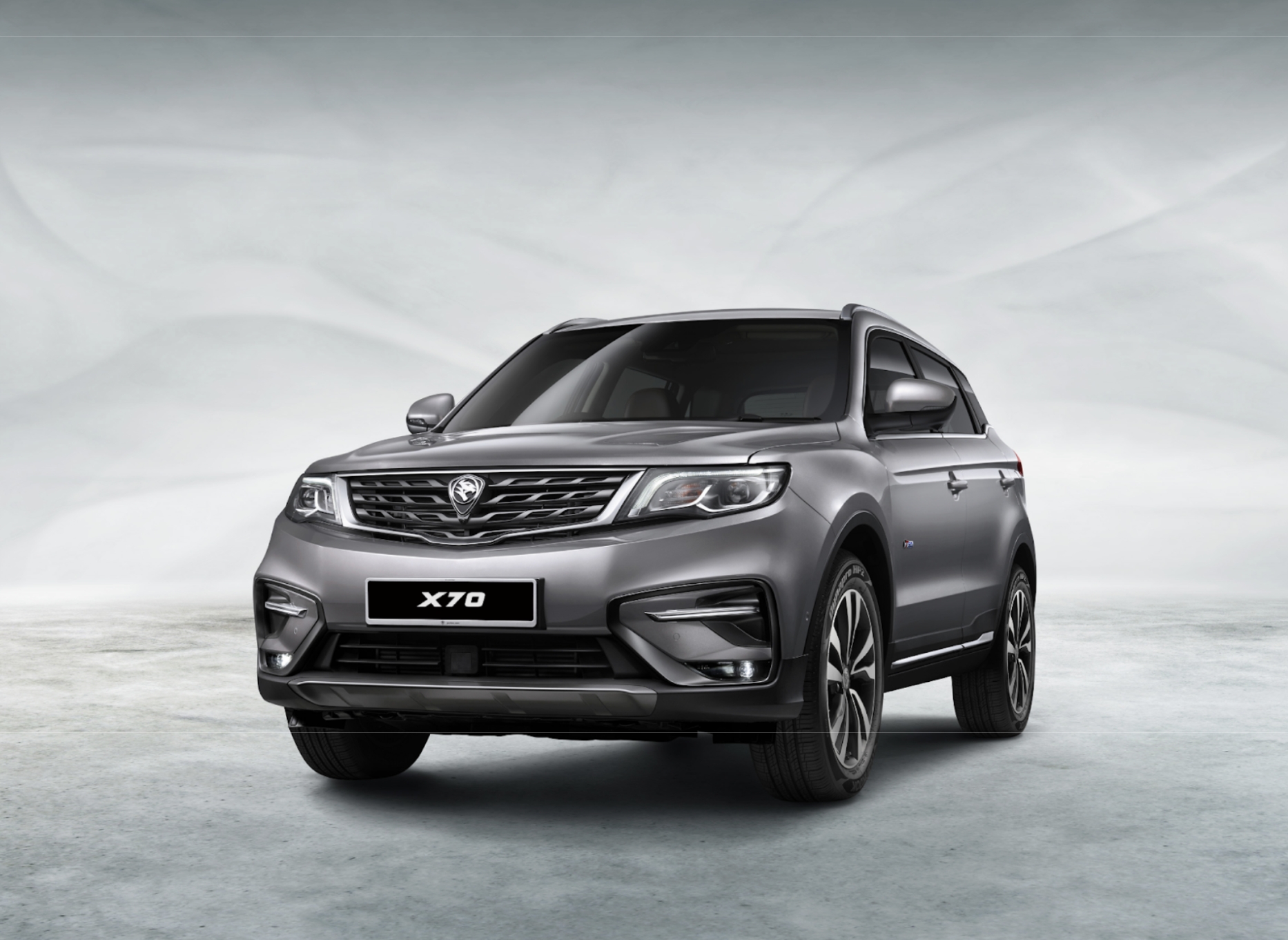Celebrating 60 years of Malaysia: a brief history of Proton
Written by Liew Wen Jie
With Malaysia Day around the corner, it is only fair that we honour this important event by celebrating the achievements of one of the nation’s most prominent emblems of growth and innovation – Proton. Are you familiar with our first domestic automobile brand? Let’s go on an enthralling voyage through time, charting the development of Proton, Malaysia’s national automobile manufacturer.

1980s: Tun Dr. Mahathir’s Towards the Future Plan

The concept of a national automobile corporation was first mooted in the early 1980s as part of the “National Car Project.” Supported by then Prime Minister, Tun Dr. Mahathir Mohamad, the project aimed to minimise the country’s reliance on imported vehicles, improve economic growth, create jobs, and encourage industrialisation.
The government, therefore, established Proton Holdings Berhad (Perusahaan Otomobil Nasional) as the company to drive this ambitious endeavour on 7th May 1983. Proton decided to cooperate with Mitsubishi Motors Corporation, which provided support in design and critical technologies while Proton provided production, assembly (CKD) of vehicles and sales services.
Aside from that, Proton is the first automobile brand in Southeast Asia to be able to manufacture its own vehicles.
1985: The birth of the Proton Saga

In 1985, the nation was on the verge of a momentous event: the big reveal of the Proton Saga. Malaysians joyfully embraced their very own national automobile – a symbol of identity and progress.
The Proton Saga, with its boxy design popular in that period, captivated hearts and minds alike. The Proton Saga comes with a 1.3-litre 4-cylinder Mitsubishi Orion Engine and most important was priced at only RM 17,575 making it the cheapest new car on the market. Despite a shaky start, then-managing director Kenji Iwabuchi managed to grow sales from 38,000 in 1987 to 81,000 by 1989. The result was the Saga capturing two-thirds of the local market.
Late 1980s: International recognition and export


Also in 1985, Proton ventured into various international markets, exporting its vehicles to countries across different continents. The company’s exports have included destinations such as the United Kingdom, Australia, Indonesia, Thailand, Singapore, the Middle East, and South Africa. In addition, did you know that Proton cars have made appearances in the Mr. Bean series?
Browse our inventory of Proton Sagas
1993: A new competitor
In 1993 Malaysia’s second automobile manufacturer, Perodua was officially established in partnership with Daihatsu. A few years later in 1994, Perodua introduced their first car – the Kancil. At that time, it was the cheapest hatchback in Malaysia, a car body that Proton did not have. Even so, Proton continued to see growth as the national brand captured 74 per cent of car sales that same year.
Read more about how Perodua became Malaysia’s largest automaker!
1996: Partnerships and acquisitions
In 1996, Proton was in the midst of an important phase of its development, and its collaboration with DRB-HICOM. Established in 1990 as a multifaceted conglomerate, DRB-Hicom operates in several industries, including real estate development, services, and the car industry. DRB-HICOM would play a significant role in shaping the company’s trajectory in the automotive industry.
With its involvement in the production, assembly, and distribution of passenger and commercial cars, including motorbikes, as well as being a licensee of Avis Rent-A-Car in Malaysia. The Group’s Automotive branch is regarded as one of the most complete automotive enterprises in the nation. The two most well-known of the several active businesses are Malaysia’s sole and only true-blue automotive OEM, PROTON Holdings Berhad (PROTON), and the national motorcycle manufacturer MODENAS.
In September 1996, Proton made a historic move by acquiring a controlling stake in the British sports car maker Lotus Cars. This acquisition represented a significant milestone in Proton’s pursuit of technological advancement and global recognition. Proton purchased a 64.9% share in Lotus Cars, giving it ownership of the legendary British automaker. The transaction was worth roughly 51 million British pounds and was part of Proton’s strategic expansion plan to strengthen its capabilities in R&D and acquire access to innovative automotive technologies.
1998: Proton’s hot hatch – Satria GTi


The Proton Satria GTi was a high-performance hot hatchback produced by Proton. It featured a 1.8-litre inline-4 engine, delivering around 145 horsepower and 168 Nm of torque. The GTi variant offered impressive acceleration and agility, making it a thrilling and fun-to-drive car.
The Satria GTi’s sporty design, including a distinctive body kit, larger alloy wheels, and rear spoiler, emphasised its performance-oriented character. Inside, the cabin boasted sporty bucket seats, a leather-wrapped steering wheel, and aluminium pedal covers, enhancing the overall sporty ambience.

One of the highlights of the Proton Satria GTi was its handling by Lotus, which was enhanced by a performance-tuned suspension system. The car’s responsive and dynamic handling was further complemented by its lightweight body, contributing to a more engaging driving experience.
However, several things influenced its sales. For starters, the Satria GTi’s high price rendered it inaccessible to certain potential purchasers. The Satria Gti was priced at RM68,000 in 1998, which is equivalent to RM112,608.70 in 2023. Not exactly cheap!
Furthermore, rising petrol prices at the time hindered its market demand, and the Satria GTi had stiff competition from other hot hatch models on the market, resulting in fewer sales compared to its rivals. Nonetheless, the Proton Satria GTi is a cherished and noteworthy model in Proton’s history, having left an indelible mark on the hot hatch market.
2004: First self-developed vehicle

Proton Gen-2 was the company’s first self-developed vehicle. It debuted in 2004 as a successor to the popular Proton Wira, and it marked an important milestone for Proton by demonstrating the company’s improvements in design, engineering, and innovation. It means that It is the first CKD without other automobile help.
2005: Mitsubishi ends equity participation
Mitsubishi Motors ended its equity participation in Proton, selling its last 7.9% shares back to Proton and exiting its position as a major shareholder. This marked a shift in the partnership, as Mitsubishi’s partnership with Proton came to an end.
2013-2016: Headwinds
During the period from 2013 to 2016, Proton experienced declining sales and market share in Malaysia from 166,118 units sold in 2005 to 72,290 in 2016. That is a 56% decline in just eleven years. The company faced various challenges, including increased competition, tax adjustment, and the launch of the Myvi.
As Malaysia’s hottest-selling car for 12 years between 2006 and 2017, the launch of the Perodua Myvi in 2005 had a significant impact on the Malaysian automotive market, particularly in the compact car segment. The Myvi quickly gained popularity and became a game-changer, eventually taking the title of Malaysia’s No. 1 sales volume from Proton.
Perodua’s strategic move to introduce the Myvi as a practical, affordable, and fuel-efficient compact car resonated with consumers, especially first-time car buyers and families. The Myvi’s success led to a shift in market demand, as buyers favoured its modern design, reliable performance, and spacious interior over Proton’s offerings, making Proton sales drop precipitously.
The Myvi’s competitive pricing and reputation for reliability attracted a large customer base, leading to increased market share for Perodua. As a result, Proton faced intensified competition and experienced fluctuations in sales in the compact car segment.
Proton’s market share in Malaysia declined during this period, collapsing to only 12.5% of the total automotive market in 2016. This is a massive drop from the 74% market dominance Proton enjoyed back in 1985.
Want to know why Myvi was the best-selling car in Malaysia?
Book a test drive with myTukar now!
2017: Strategic alliance with Geely

In 2017, China’s Zhejiang Geely Holding Group acquired a 49.9% stock in Proton’s parent company, DRB-HICOM, and Proton’s 51% stake in Lotus. The acquisition made Geely the largest single shareholder of Proton, signifying the beginning of a strategic alliance. Following Geely’s investment in Proton, the two companies established a joint venture, Proton Holdings Bhd. Under this partnership, Proton and Geely collaborated on various initiatives, including product development, technology sharing, and market expansion.
2018: X70 – Proton’s first-ever SUV

On 12 December 2018, the X70 was formally unveiled at the Kuala Lumpur Convention Centre. Based on Geely’s Boyue model with a starting price of RM82,000, the five-seater SUV runs on a 1.8-litre turbocharged petrol direct injection (TGDI) engine. Immediately the Proton X70 became a game-changer for Proton, receiving positive reviews and gaining popularity among consumers in Malaysia, gaining 10,000 bookings before it even launched and continues to lead in the C-segment SUV market.
Browse our list of myTukar Certified X70s
2020: X50 – The best-selling SUV in Malaysia

The Proton X50 is a best-selling B-segment SUV in Malaysia, introduced in October 2020 with a starting price of RM 79,200. It has gained immense popularity for its modern design, advanced technology, and competitive pricing. It includes a 1.5-litre turbocharged engine with varying power outputs. As a result of its strong appeal and positive reception from consumers, the Proton X50 has heralded the return of Proton’s as a significant player in the Malaysian automotive market. The X50 quickly dominated the SUV segment, becoming the best seller.
Test drive a myTukar Certified X50s

Launched in May 2023, the Proton X90 could extend Proton’s hold on the Malaysian car market. The Proton X90 is a 7-seater mid-size SUV powered by a 1.5L turbocharged 3-cylinder engine with a 48V mild-hybrid system and is available in 4 variants. It is expected to be a more premium and luxurious car than the X50, and it is likely to appeal to a higher-end segment of the market.
With 5,000 bookings one month after the launch in May, the X90 could solidify Proton’s hold on the SUV market by attracting new customers who are looking for a more premium SUV.
Is Proton making a comeback?
The Proton X70 and X50 have aided Proton’s growth by allowing the company to enter new market segments, improve its brand reputation, provide a competitive advantage with innovative features, and increase sales and revenue. By December 2022, Proton had increased its sales by 118.44% from 64,744 units in 2018 to 141,432 units in 2022. These cars have revitalised Proton’s brand presence and placement in the automotive market with the X90 poised to give Proton another boost in market share and sales.
Proton has also started exporting cars to other countries again. Proton has seen a 290% increase in exports from 2018 to 2022, with 1,388 units sold to South Africa, Brunei, Egypt, Fiji, Jordan, Lebanon, Mauritius, Pakistan, the United Arab Emirates, and Zimbabwe!

As we celebrate this Malaysia Day, we remember Proton’s imaginative inception and solid foundation – an automotive beacon that illuminates Malaysia’s progress. Proton’s history resonates with the essence of Malaysia’s spirit – a nation that overcame constraints and created its way to success. Happy National Day, Malaysia – may Proton’s indomitable spirit continue to propel our country’s progress for future generations.
If you feel like you should take our national car for a spin, check out what Proton cars we have in stock right now and go for a test drive!





